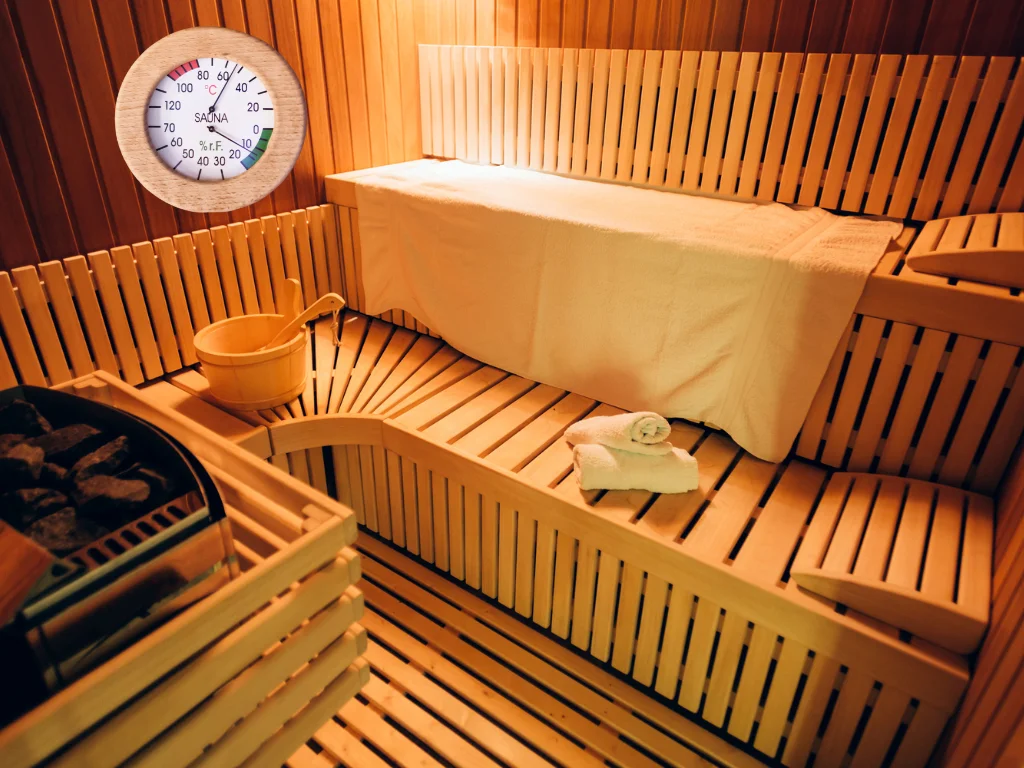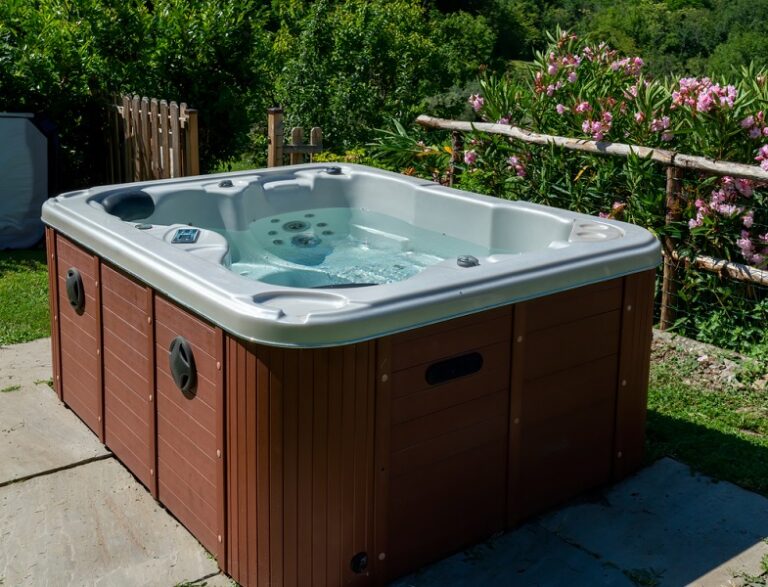Optimal Sauna Temperature: The Ultimate Guide
Find the perfect sauna temperature for a cozy and rejuvenating experience. From mild warmth to sizzling heat, find your ideal comfort level. Relax, unwind, and embrace the magic of temperature.
The temperature refers to the temperature of the air inside the sauna. Saunas built according to traditional methods are usually heated to 150°F to 195°F (65°C to 90°C).
However, the ideal temperature for a sauna can vary depending on the kind, the purpose of your session, and your personal preferences.
Understanding Sauna Temperature
Sauna temperature is critical to ensuring a safe and beneficial sauna experience. The right temperature can enhance the therapeutic effects of the sauna, while incorrect temperatures can pose health risks.
Types of Saunas and Their Temperature Ranges
Different types of saunas operate at varying temperature ranges. Understanding these differences can help you choose the proper sauna for your needs.
Traditional Finnish Sauna Temperature
The traditional Finnish sauna is the most well-known type. It typically operates at temperatures between 70°C and 100°C (158°F and 212°F). The high heat combined with low humidity creates an intense and refreshing experience.
Optimal Range
The ideal temperature for a Finnish sauna is usually around 80°C to 90°C (176°F to 194°F), which provides the best balance of heat and comfort.
Pros and Cons
Pros:
- Deep muscle relaxation
- Improved circulation
- Enhanced detoxification
Cons:
- It may be too intense for beginners
- Risk of dehydration if not adequately hydrated

Infrared Sauna Temperature
Infrared saunas use infrared light to heat the body directly rather than heating the air. This results in a lower operating temperature, typically between 45°C and 60°C (113°F and 140°F).
Optimal Range
For most users, an infrared sauna temperature of around 50°C to 55°C (122°F to 131°F) is ideal. This range allows for a comfortable yet practical sweat.
Pros and Cons
Pros:
- Lower temperatures are more comfortable for beginners
- Effective at promoting relaxation and detoxification
- It can be used for longer sessions
Cons:
- Less intense compared to traditional saunas
- It may not provide the same deep muscle relaxation
Steam Sauna Temperature
Steam saunas, known as steam rooms, combine heat with high humidity. The temperature in a steam sauna usually ranges from 40°C to 50°C (104°F to 122°F), but the high humidity makes it feel much hotter.
Optimal Range
An optimal temperature for a steam sauna is around 45°C (113°F). The humidity level should be close to 100% to ensure a proper steam sauna experience.
Pros and Cons
Pros:
- Highly effective for skin hydration and respiratory health
- Comfortable heat levels
- Promotes relaxation
Cons:
- High humidity may be uncomfortable for some
- This can lead to overheating if not monitored properly

Health Benefits of Optimal Sauna Temperature
Using a sauna at the optimal temperature can provide numerous health benefits. These benefits include:
- Detoxification: Sweating helps to eliminate toxins from the body.
- Cardiovascular Health: Regular sauna use can improve circulation and reduce blood pressure.
- Skin Health: Saunas can help to cleanse the skin and improve its appearance.
- Muscle Relaxation: The heat helps to relax muscles and relieve tension.
- Stress Relief: The sauna environment promotes relaxation and reduces stress levels.
Risks of Incorrect Sauna Temperature
While saunas offer many benefits, using them at incorrect temperatures can pose risks, such as:
- Overheating: It can lead to heat exhaustion or heat stroke.
- Dehydration: Excessive sweating can cause fluid loss.
- Health Risks: People with certain medical conditions may experience adverse effects.
How to Measure Sauna Temperature
Accurate measurement of sauna temperature is essential for safety and effectiveness. Here are some tools and methods:
- Thermometers: Special sauna thermometers can be placed inside the sauna to monitor the temperature.
- Infrared Sensors: These can measure the temperature of surfaces and the air inside the sauna.
- Built-in Temperature Controls: Many modern saunas have digital controls that allow precise temperature settings.
Adjusting Sauna Temperature
Personalizing your sauna experience involves adjusting the temperature to your comfort level. Here are some tips:
- Start Low: Beginners should start at lower temperatures and gradually increase as they become accustomed to the heat.
- Listen to Your Body: Pay attention to how your body reacts and adjust the temperature accordingly.
- Use Controls: Utilize the built-in controls of your sauna to set the desired temperature.
Sauna Temperature for Beginners
Starting with a lower temperature is essential for those new to sauna use. A comfortable starting range is between 60°C to 70°C (140°F to 158°F) for traditional saunas and around 45°C to 50°C (113°F to 122°F) for infrared saunas.
Advanced Sauna Users and High-Temperature Saunas
Experienced sauna users may prefer higher temperatures for a more intense experience. However, it’s crucial to follow guidelines and not exceed safe limits. Advanced users often enjoy temperatures closer to 100°C (212°F) in traditional saunas.
Sauna Temperature and Duration
The duration of a sauna session is closely linked to the temperature. Higher temperatures typically mean shorter sessions. Here are some general guidelines:
- Low to Medium Heat (45°C to 70°C): 15-30 minutes
- High Heat (70°C to 100°C): 10-20 minutes
Seasonal Adjustments in Sauna Temperature
Sauna use can be adapted to different seasons. In colder months, higher temperatures may be more comfortable, while in warmer months, slightly lower temperatures can still provide a satisfying experience.
Cultural Perspectives on Sauna Temperature
Different cultures have varying preferences for sauna temperature. For example:
- Finnish Saunas: High temperatures, dry heat
- Russian Banyas: High heat with occasional steam bursts
- Turkish Baths: Moderate heat with high humidity
Sauna Temperature for Health Conditions
Certain health conditions may require special considerations for sauna use. For example:
- Cardiovascular Issues: Lower temperatures and shorter sessions
- Respiratory Conditions: Steam saunas can be beneficial, but temperature should be monitored
- Skin Conditions: Lower temperatures to avoid irritation
Children and Sauna Temperature
Children should use saunas at lower temperatures and for shorter durations. A safe range is typically around 45°C to 60°C (113°F to 140°F) for 5-10 minutes.
Elderly and Sauna Temperature
Older adults should also use saunas at lower temperatures, around 50°C to 65°C (122°F to 149°F), and for shorter sessions to avoid overheating and dehydration.

FAQs:
What is the best temperature for a traditional sauna?
The ideal range is between 80°C to 90°C (176°F to 194°F).
How hot should an infrared sauna be?
The optimal temperature is between 50°C to 55°C (122°F to 131°F).
Is it safe to use a sauna every day?
Yes, if you stay within the recommended temperature and duration guidelines.
Can the sauna temperature be too low?
Yes, temperatures below 40°C (104°F) may not provide the full health benefits.
What are the signs of overheating in a sauna?
Dizziness, headache, nausea, and excessive sweating are signs of.
How can I make my sauna experience more comfortable?
Start with lower temperatures, stay hydrated, and take breaks as needed.
Fun with Sauna Temperature
Saunas can be fun, especially when you get creative with the temperature. Here are a couple of ideas to add some excitement to your experience:
Sauna Thermometer Adventure
Turn the temperature into a fun adventure by creating a thermometer scavenger hunt. Hide small, colorful thermometers around the sauna, and challenge your friends or family to find them. It’s a playful way to explore different temperatures and keep everyone entertained.
Temperature Teasers: Sauna Riddles
Create temperature-related riddles or jokes to get your brain working while enjoying the sauna heat. For example, “What did one sauna say to the other? I’m feeling quite ‘steamed’ today!” These lighthearted riddles and jokes can add a touch of humor and laughter to your sessions.
Related Products for the Perfect Sauna Experience
As an Amazon Associate, we earn from qualifying purchases. This post may contain affiliate links, which means we may receive a small commission at no additional cost to you.
Summary
Temperature plays a crucial role in creating a cozy and enjoyable experience. It’s essential to find the right balance that suits your comfort level. From mild and warm to sizzling hot, there’s a sauna temperature for everyone. Listen to your body, stay safe, and remember to cool down after your sauna session. Visit For more reading about hot tub patios and more information about Saunas.
Common Queries:
[wps_faq style=”classic” question=”How do I know if the temperature is too hot for me?”]Pay attention to how your body feels. If you start feeling lightheaded, dizzy, or uncomfortable, it’s a sign that the temperature might be too hot for you. Listen to your body and step out of the sauna to cool down.[/wps_faq]
[wps_faq style=”classic” question=”Can I adjust the sauna temperature to my liking?”]Yes! Most saunas allow you to adjust the heat to your preference. You can use the sauna controls or add or remove stones to increase or decrease the temperature.[/wps_faq]
[wps_faq style=”classic” question=”What are the benefits of moderate sauna heat?”]A moderate sauna heat can help relax your muscles, relieve stress, improve circulation, and promote well-being. It offers a soothing and rejuvenating experience for both your body and mind.[/wps_faq]



















